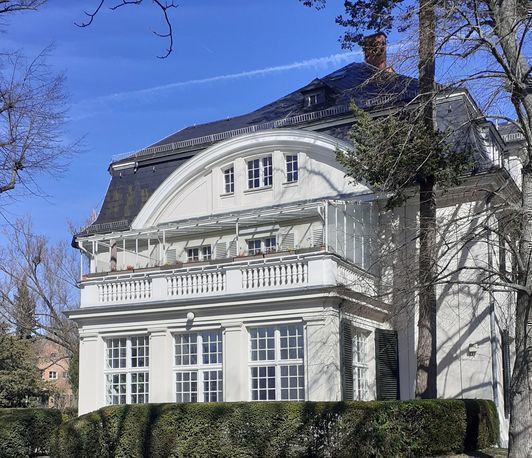How do chemical bonds break in ultrastrong coupling?
- MP Department Seminar
- Date: Nov 17, 2023
- Time: 09:30 AM c.t. - 10:30 AM (Local Time Germany)
- Speaker: Felipe Herrera
- Department of Physics, Universidad de Santiago de Chile USACH
- Location: Haber Villa
- Room: Seminar Room
- Host: Department of Molecular Physics
- Contact: valtolina@fhi-berlin.mpg.de

Current efforts for implementing cavity QED in the ultrastrong coupling (USC) regime using molecular vibrations in mid-infrared nanoresonators opens exciting opportunities for exploring novel chemical reactivities that exploit quantum correlations with the electromagnetic vacuum at room temperature. While most theoretical studies have primarily focused on rationalizing previous experimental reports of modified chemical reactions in collective strong coupling [1,2], the possibilities for single-molecule chemistry in the fully-quantum regime of light and matter still remains largely unexplored. We developed a coordinate representation approach for the light-matter Hamiltonian (DVR) that together with exact quantum dynamics techniques (MCTDH) provides key physical insights on the evolution of molecular and photonic observables over sub-picosecond timescales [3-5]. We use these methods to understand the quantum mechanical nature of molecular dissociation in infrared cavities under USC. For polar anharmonic bonds, we show that the combined influence of Bloch-Siegert shifts, wavepacket spreading, nuclear anharmonicity and vacuum field polarization via permanent dipoles, can lead to significant enhancement of the molecular dissociation rate relative to free space, for experimentally relevant non-equilibrium scenarios [6]. Our work thus provides conceptual and numerical tools for understanding the new possibilities that cavity QED physics can bring to nanoscale chemistry.
- K. Nagarajan, A. Thomas, T. W. Ebbesen, JACS 143, 16877-16889, 2021.
- W. Ahn, J. F. Triana, F. Recabal, F. Herrera, B. Simpkins, Science 380, 1165, 2023.
- F. Hernández and F. Herrera, J. Chem. Phys. 151, 144116, 2019.
- J. F. Triana, F. J. Hernández, F. Herrera, J. Chem. Phys. 152, 234111, 2020.
- F. Triana and F. Herrera, J. Chem. Phys. 157, 194104, 2022.
- J. F. Triana, F.
Herrera, DOI:10.26434/chemrxiv.12702419.v1, 2020.